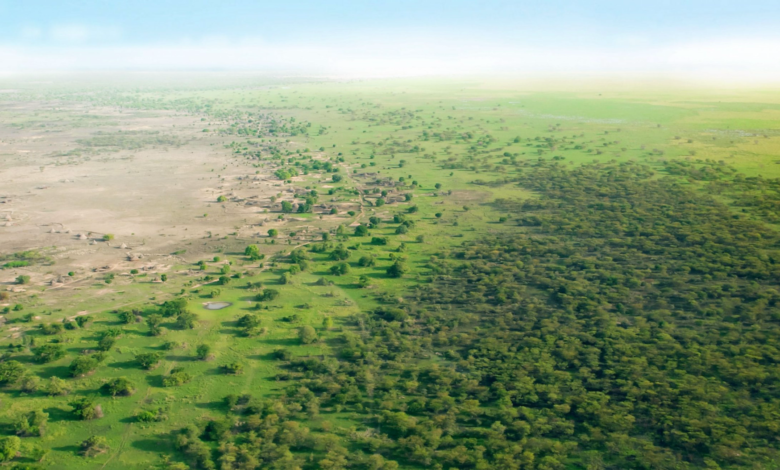
According to a report published in December 2024 by the World Economic Forum (WEF) and Tree Aid, restoring degraded lands in the Sahel could generate $28 billion USD through the voluntary carbon market. This estimate is based on a potential sequestration capacity of 1.8 billion metric tons of CO2 equivalent (tCO2e) in the region, at an average price of $15.74 per ton observed in 2023.
The restoration of 100 million hectares of degraded lands will create 10 million green jobs in Africa by 2030
The Great Green Wall (GGW), an initiative launched in 2007 by the African Union, could be the major beneficiary of this opportunity. Indeed, by restoring 100 million hectares of degraded lands, this initiative also aims to create 10 million green jobs by 2030. However, insufficient public funding hampers this project. This explains the proposals made by the report’s authors to “fill the gap through the carbon market, a market where companies purchase credits to offset their emissions.” Referring to forecasts from BloombergNEF, WEF and Tree Aid indicate that “the prices of sequestered carbon credits could reach $146 per ton by 2030 and $172 per ton by 2050.”
Ecological restoration
Regarding the Sahel, the report’s authors emphasize that “the market potential represents an opportunity for economic and environmental transformation.” The report further notes that “with lands weakened by desertification and climate change, ecological restoration becomes crucial to preserve ecosystems, improve food security, and enhance the resilience of local populations.” These projects are also expected to bring “significant income to communities, supporting activities such as forest management or sustainable agriculture.”
To recall, the WEF and Tree Aid report is not the first to highlight funding as one of the challenges slowing the implementation of the Great Green Wall project. Indeed, in 2021, according to multiple sources, halfway through its execution, the project had shown mixed results.
Achieving the Great Green Wall requires an additional $33 billion USD by the end of the decade
It was then revealed that “only 18 million hectares of land had been restored and 350,000 green jobs created.” Upon analysis, these figures fall well short of the objectives set for 2030. Moreover, according to data shared by the United Nations Convention to Combat Desertification (UNCCD) in 2021, “achieving the Great Green Wall requires an additional $33 billion USD by the end of the decade to meet the objectives.” This estimate highlights the scale of efforts needed to turn the initiative into a success, both financially and operationally.
Furthermore, for carbon credits to become a viable and sustainable solution, WEF and Tree Aid recommend implementing several essential conditions. Firstly, Sahelian governments need to establish clear regulatory frameworks to structure and secure this emerging market. Secondly, creating public-private partnerships is also crucial to reassure investors, while active involvement of local communities will ensure the sustainability and acceptance of projects. Ultimately, if these challenges are addressed, the Great Green Wall is expected to become a global example of economic and ecological transformation, combining climate action with sustainable development.






